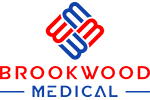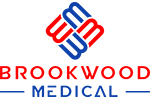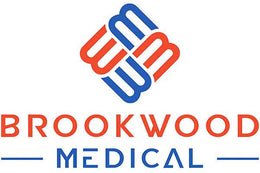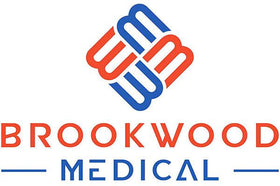The Unseen Challenge: How Masks Affect Speech and Communication

In the age of social distancing and health safety protocols, the rise of mask-wearing has become a significant aspect of daily life. From grocery stores to classrooms, masks have become the norm. While they serve an essential purpose in protecting public health, their effect on communication is profound and often overlooked. In this article, we delve into the various ways masks impact speech and communication, examining both the challenges they pose and the creative solutions people have developed to adapt.
The Science of Speech: How Communication Works
Before exploring the impact of masks, it’s essential to understand how speech and communication work. Effective communication relies on a complex interplay of auditory and visual signals. When we speak, our voices produce sound waves that carry information to listeners. At the same time, facial expressions and lip movements play an integral role in conveying emotions and intentions.
The Role of Visual Cues
Research suggests that up to 50% of our communication is non-verbal. This includes the visual cues we pick up from a speaker’s face. The lips, teeth, and facial expressions provide context and clarity to spoken words. For example, when someone smiles while saying “no,” the conflicting signals can lead to confusion. Thus, the absence of these visual cues when masks are worn can hinder effective communication.
Challenges Masks Bring to Communication
While masks are crucial for preventing the spread of respiratory illnesses, they come with specific challenges for speech and communication. Below are some significant impacts that wearing masks can have:
1. Speech Clarity and Audibility
- Sound Absorption: Masks can muffle sound, making it harder to hear and understand what’s being said. This is particularly true with fabric masks that absorb sound waves.
- Consonant Distortion: Consonant sounds are essential for understanding speech. Masks may obstruct the articulation of these sounds, leading to miscommunication.
2. Loss of Visual Cues
- Restricted Facial Expressions: Many emotions are conveyed through facial expressions. Masks obscure these signals, which can result in misunderstandings and heightened anxiety during conversations.
- Lip-Reading Challenges: For individuals who rely on lip-reading as part of their communication, masks create a barrier that makes it difficult to follow conversations.
3. Increased Cognitive Load
The need to interpret masked communication requires more cognitive resources. Listeners may find themselves exerting extra effort to piece together what’s being communicated, leading to fatigue. This can be particularly taxing in environments that require sustained attention, such as classrooms or meetings.
Adaptation in Speech and Communication Practices
As masks have become an integral part of our lives, individuals and communities have developed creative strategies to maintain effective communication. Here are some adaptations that are gaining traction:
1. Enhanced Clear Masks
Clear masks that feature transparent panels allow for visibility of the mouth and facial expressions. These masks have gained popularity in educational settings and among professionals who work with the deaf and hard-of-hearing communities. By providing clarity and visibility, clear masks bridge the gap created by traditional masks.
2. Improved Enunciation and Slow Speech
People are learning to modify their speaking habits when wearing masks. Enunciating words more clearly and speaking slowly can greatly assist listeners in understanding. Whether it’s a teacher conveying lessons to students or colleagues discussing important matters in a meeting, clear enunciation becomes key.
3. Use of Technology
Digital tools are becoming a go-to solution for enhancing communication. With applications that convert speech to text in real time, individuals can rely on technology to facilitate conversations. For instance, during a virtual meeting, sharing slides with spoken content can complement what's being discussed verbally.
Building Empathy and Understanding
As we navigate this new normal, it’s essential to cultivate empathy for those who may struggle with masked communication. Here are some tips to promote understanding in everyday interactions:
- Be Patient: Allow extra time for conversations, and encourage others to express themselves clearly.
- Use Gestures: Incorporating hand signals or gestures can help convey messages more effectively.
- Check for Understanding: Don’t hesitate to ask clarifying questions to ensure everyone is on the same page.
Research and Studies on Masks and Communication
Numerous studies have explored the effects of masks on speech and communication. For instance, research published in the Journal of Speech, Language, and Hearing Research highlights how masks reduce listener comprehension due to sound distortion. Another study found that individuals show a significant increase in communication errors without the visual cues of facial expressions.
Moreover, experts argue that the challenges brought on by masks may lead to longer-term changes in social interactions and communication habits. As society continues to adapt, understanding the importance of effective communication remains a priority.
The Road Ahead: Embracing Change
While the mask-wearing era may have initially posed challenges, it has also sparked innovation and adaptation in communication methods. By embracing clear communication practices and fostering empathy, we can turn these challenges into opportunities. In the coming years, it’s likely that the skills we’ve honed during this period will become invaluable assets in our personal and professional lives.
Final Thoughts: A New Era of Communication
The impact of masks on speech and communication is multifaceted, affecting every aspect of our interactions. From altered sound to loss of visual cues, masks present unique challenges that everyone must navigate. Yet, through innovation, empathy, and understanding, we have the chance to redefine how we connect with one another. As we move forward, the lessons we learn from this period will shape a more inclusive and aware society, capable of overcoming the barriers created by masks.
Discover the creations of a fellow Shopify store owner by exploring their online store. Simply click here to access the store. Please remember that this is a promotional link, and we cannot be held responsible for the content of the linked store.






